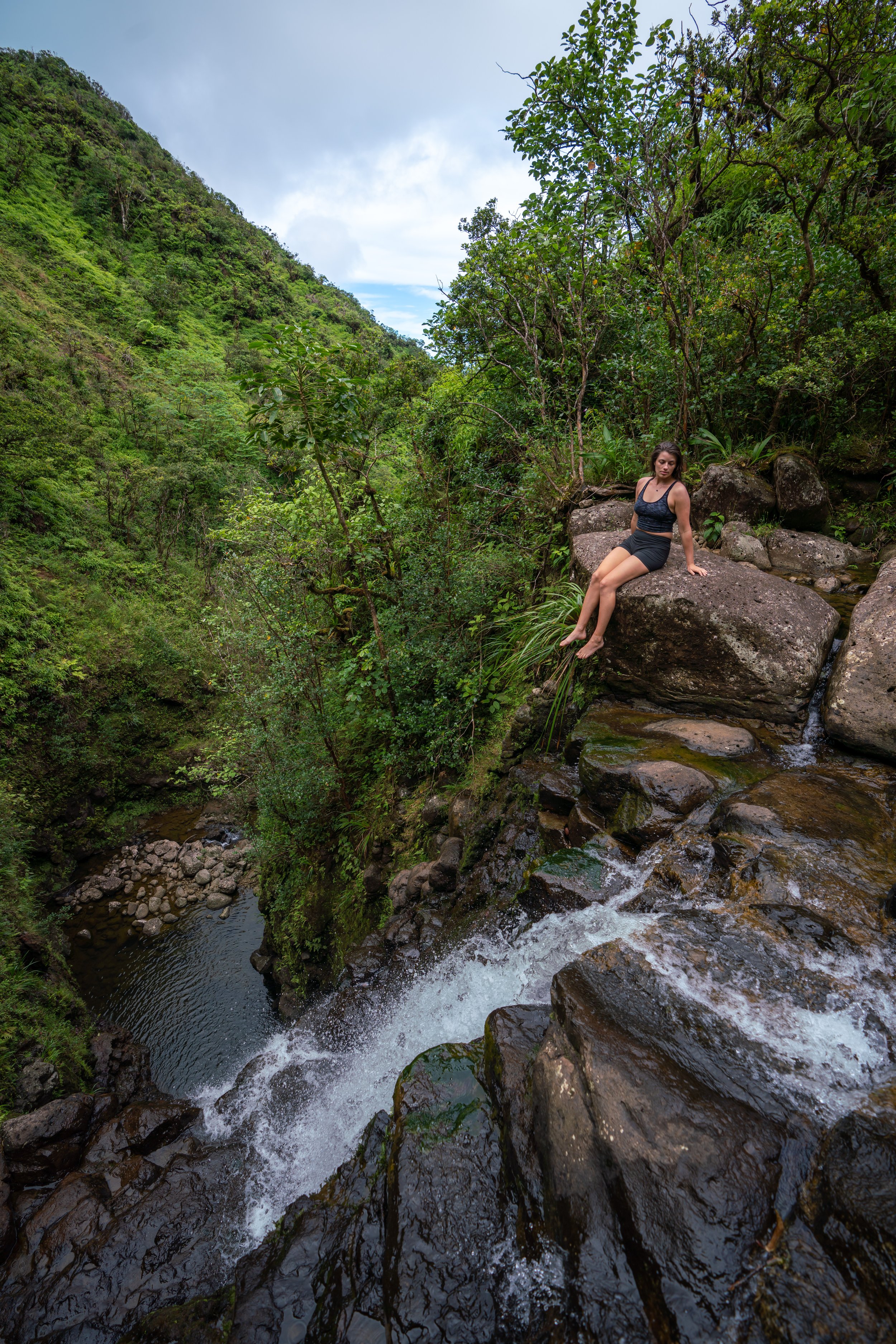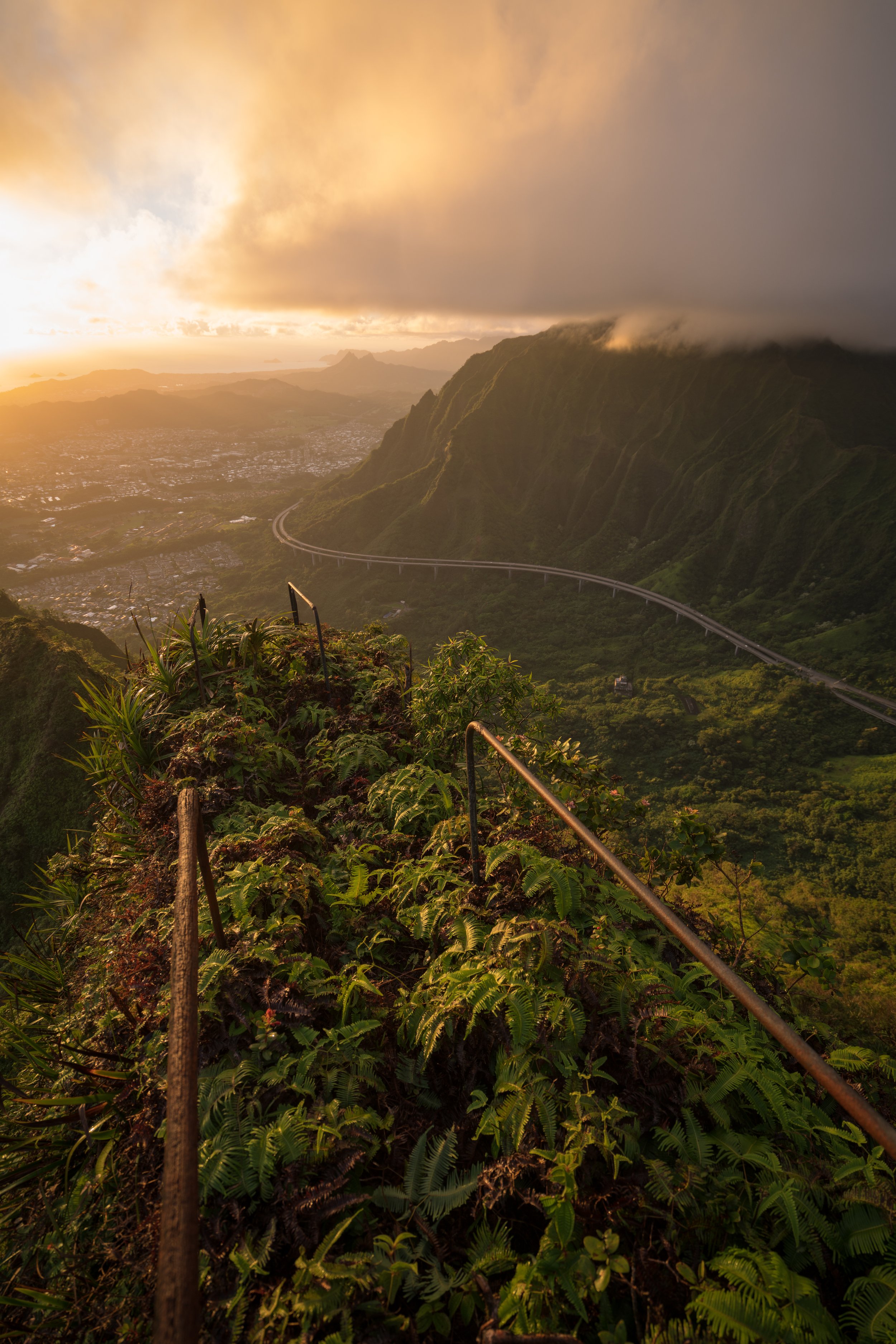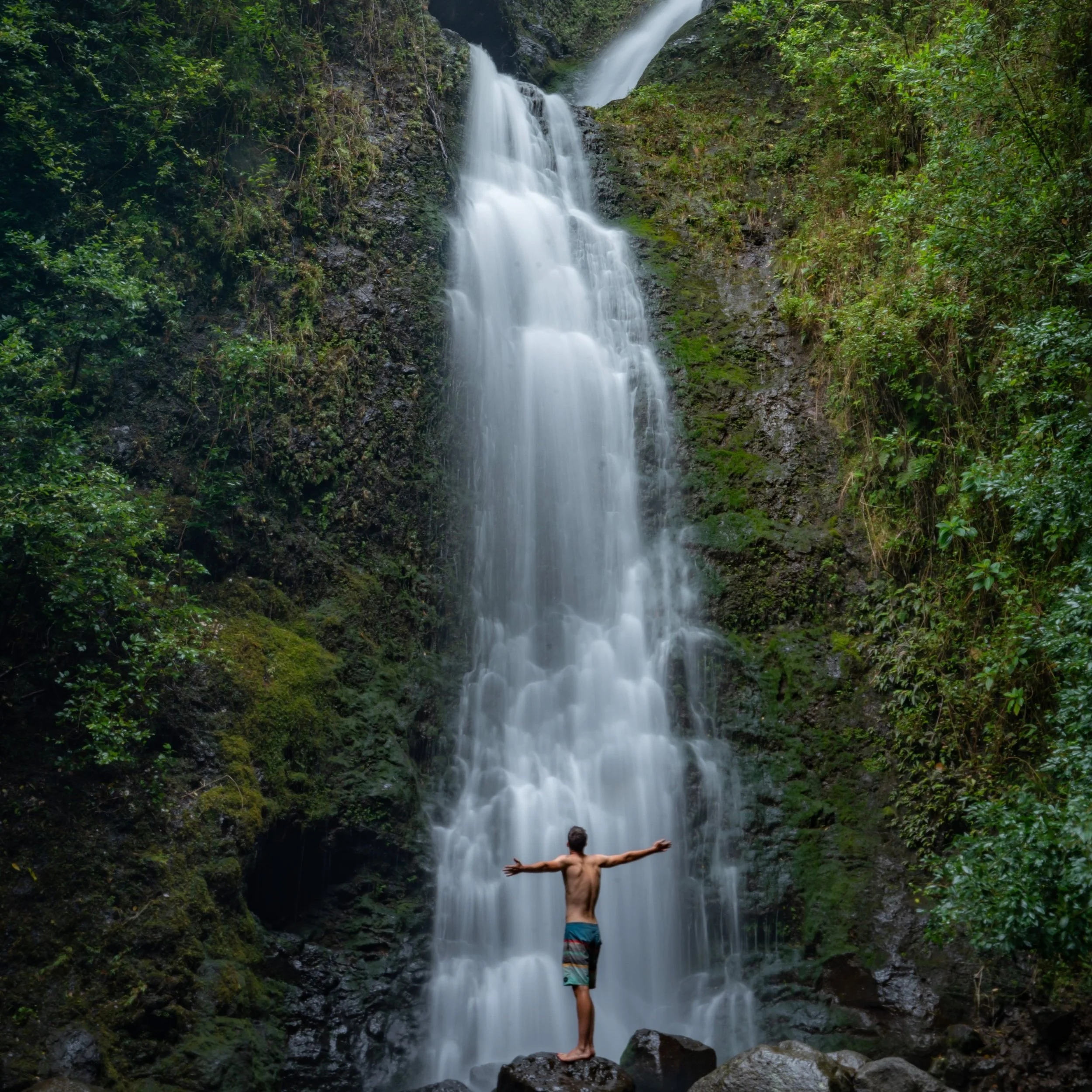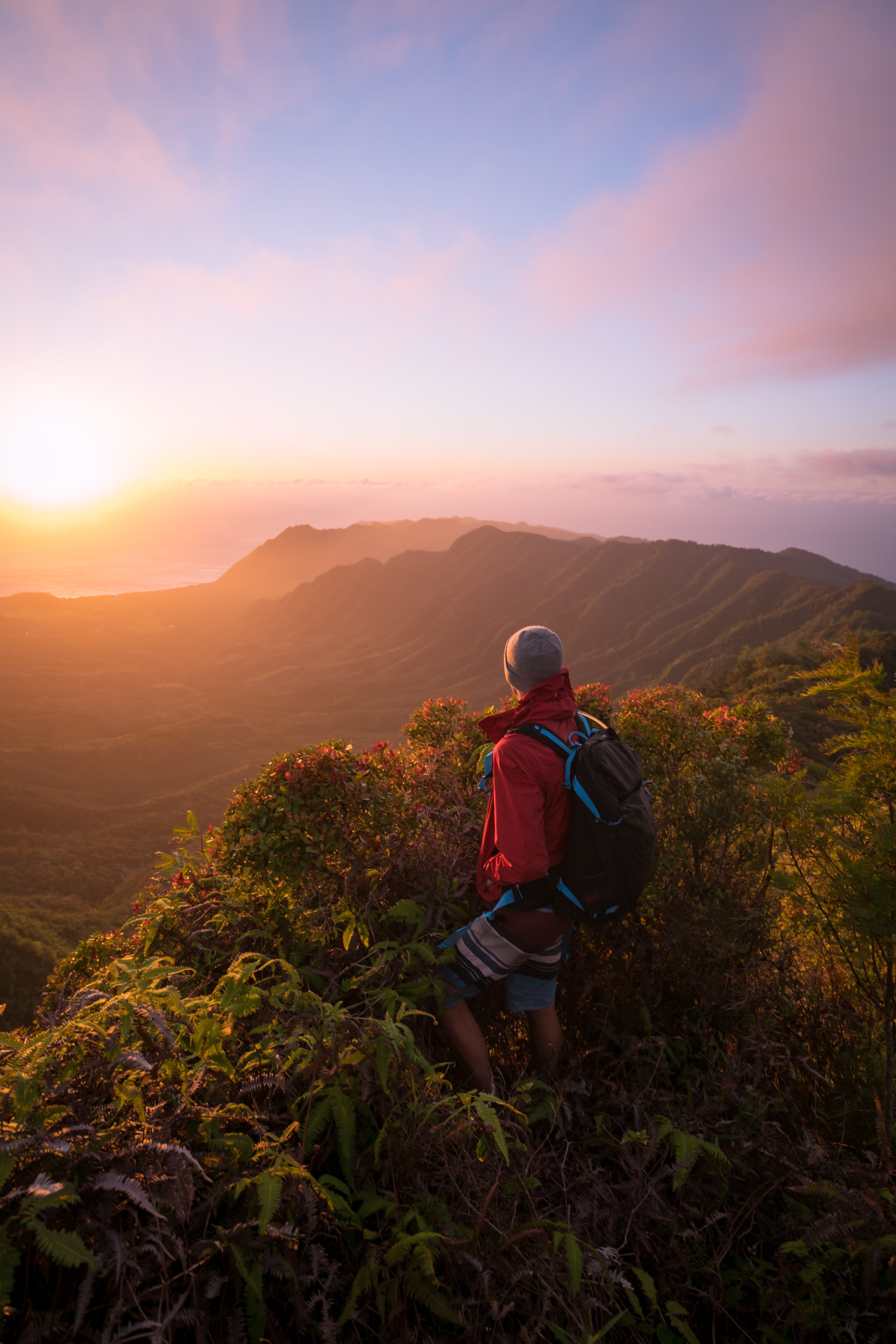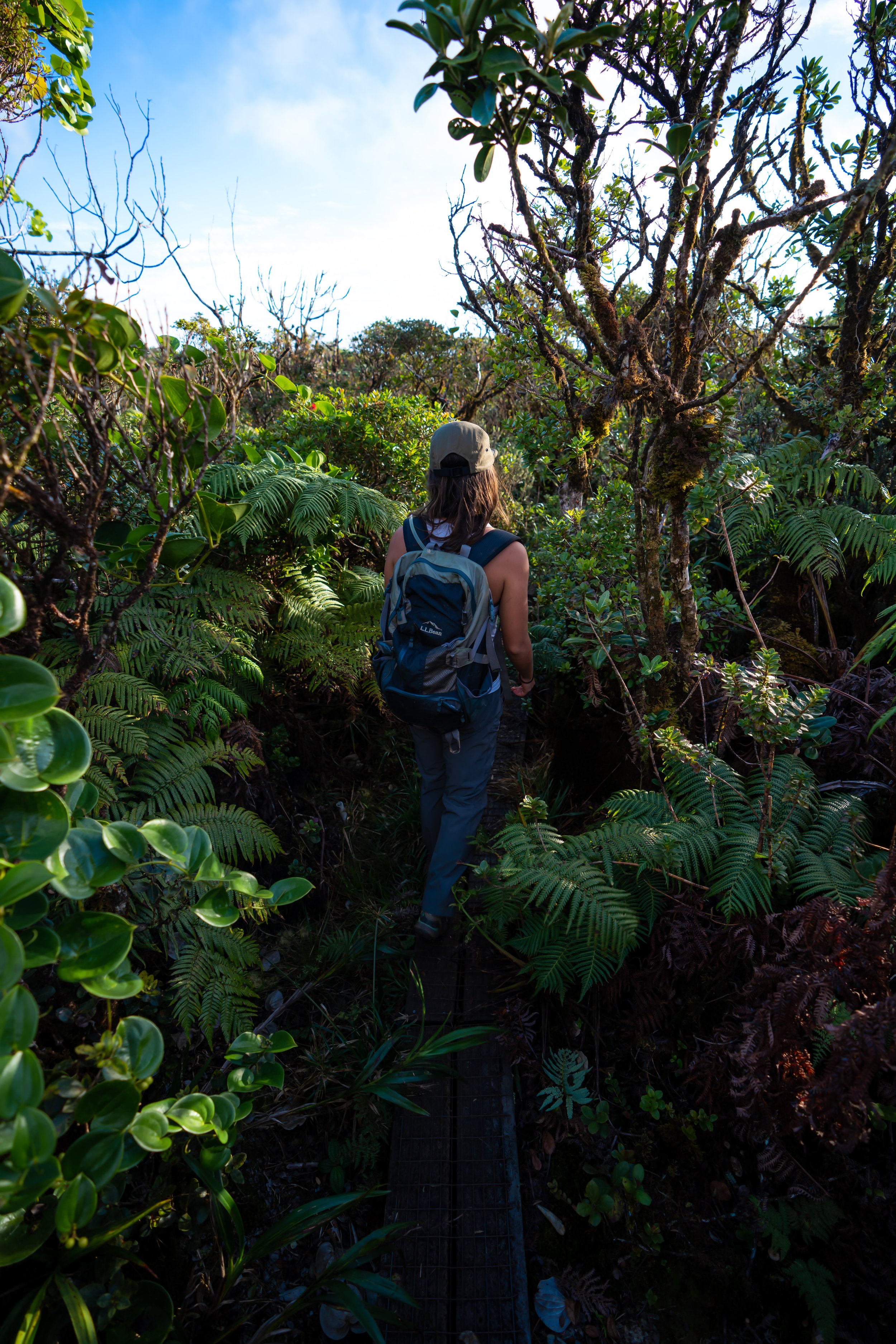Hiking the Poamoho Trail on Oʻahu, Hawaiʻi
Distance: 7.0 miles / 11.3 km
The Poamoho Trail in the northern Koʻolau Mountains on Oʻahu is what I see as the best all-around day hike on the island!
I say this because the Poamoho Trail is a relatively easy, well-maintained, and remote hike through one of the most beautiful and pristine native Hawaiian forests on the island—not to mention that the views from the summit cannot be beaten on a clear day!
By this, I mean that there are few places on the island where the summit views look out toward an entirely undeveloped landscape; the other most notable is the Keaʻau Middle Ridge Trail on the West Side of Oʻahu. However, what’s perhaps even more notable is that the Poamoho Trail is, for the most part, very flat—gaining just 560 ft. (171 m) from the trailhead to the summit.
This slow elevation gain is hardly even noticeable over the length of the trail, making the very remote Poamoho Trail much easier than it may initially seem.
All this to say, Poamoho is a personal favorite of mine because of the stunning views, the well-maintained trail, and the permit system in place, which is designed to limit the number of hikers—making the experience better and more enjoyable overall!
How to Get a Permit for the Poamoho Trail?
The Poamoho Trail is one of just a few hikes on Oʻahu that requires a permit in order to visit.
As previously mentioned, this is designed to limit the number of visitors per day, but obtaining a Poamoho Trail permit has gotten easier over the years compared to the mail-in or in-person-only options of the past.
That said, one can still mail in or walk into the downtown Honolulu office to do a same-day pick-up, but the easiest and most convenient option is the online application using the link below.
Note that a permit holder can only receive one Poamoho Trail permit every 30 days.
Book Here: Poamoho Trail Permit
Plantation-Poamoho Hele Loa Access Road [4WD Only]
The Poamoho Trailhead is located at the very end of the 5.8-mile (9.3 km) 4WD Plantation-Poamoho Hele Loa Access Road that begins at locked gate off Paʻalaʻa Uka Pūpūkea Rd.
That being said, do not attempt to drive the access road in a low-clearance 2WD drive vehicle—especially during or following periods of wet weather.
In my experience, the drive should take about 30-35 minutes each way.
Google Maps Directions: Paʻalaʻa Uka Pūpūkea Rd
Poamoho Trailhead Parking
At the end of the 5.8-mile (9.3 km) access road, parking for the Poamoho Trail can be found in one of two places just prior to the trailhead.
Please make sure to give other cars plenty of space to turn around.
Google Maps Directions: Poamoho Trailhead
Hiking the Poamoho Ridge Trail
From the parking area, the Poamoho Trail begins just up the road.
Even though Poamoho is a well-trafficked trail, I always recommend wearing pants, as the upper elevations of the ridge are a bit more overgrown and muddy than the beginning.
The pants below are my recommendations that hold up the best with the overgrowth here in Hawaiʻi, but with any hiking pants that need to be durable, make sure that they are at or near 100% nylon. This is really the most important factor!
Other than everything said above, there’s really not much more that you need to know.
The Poamoho Ridge Trail is a very straightforward hike from the trailhead to the summit, gaining elevation very gradually compared to other steeper hikes, such as Mānana Ridge.
With about 1.0 mile (1.6 km) left, the Poamoho Trail passes this sign, where the trail gets slightly more overgrown than the beginning few miles.
When the trail parallels the upper origins of the South Fork of the Helemano Stream, look out for one of Hawaiʻi’s most unique native plants called the Koliʻi.
In my opinion, Koliʻi is one of the most beautiful native species we have—a rare sight to see in bloom, as they only flower once, seed once, and then die.
Poamoho Summit
From the summit of Poamoho, you can see across much of Punaluʻu and Kahana Valley, including notable east-side peaks, such as Puʻu Piei, Puʻu Manamana, and Puʻu ʻŌhulehule from left to right in the photo below.
Koʻolau Summit Trail (KST) to Poamoho Cabin
Distance (One Way): 1.0 miles / 1.6 km
Beyond the main Poamoho Summit, the Poamoho Cabin is a popular end destination for day-hikers on the Poamoho Trail.
That being said, this cabin is built for conservation workers that spend nights in the field, and if you are going to visit, I ask that you leave it better than you found it.
Furthermore, vandalizing these cabins only gets them locked for all hikers in the community, which generally leads to more vandalism to break back in. Please don’t contribute to this problem.
In any case, to get to Poamoho Cabin, head south on the KST from the main Poamoho Summit.
The trail will follow one of the most trafficked sections on the entire KST, which is made easy by a few sections of boardwalk.
At this split, you can go either way, as the trail will meet up again shortly after.
Please close all of these gates to keep the ungulates out of these conservation areas.
Poamoho Cabin
As previously mentioned, don’t do anything destructive to this or any cabin.
Thank you!
Koʻolau Summit Trail (KST)
In my extensive KST article, I talk a lot about Poamoho being one of the best access trails to tackle the northern sections of the hike.
However, in this post, I want to urge caution before you venture further north or south of Poamoho.
Other than the little easy section to the cabin, these are extremely remote miles on the summit trail, and they should not be planned lightly. The KST to the south of Poamoho will seem light and fast until an abrupt end at the windward notch, which is when you’re right back in the worst of it again. As well, the KST north of Poamoho will get overgrown immediately when you leave the summit area, and there are no exit trails until Papali Ridge, located a long way past Poamoho.
All said, make sure that you have it mapped and planned well because options to leave the summit once you’re far from Poamoho in either direction are few and far between.
Read My Separate Post: Koʻolau Summit Trail (KST)
Native Plants on the Poamoho Trail
The Poamoho Trail is arguably one of the best trails on the island to find a variety of native Hawaiian plants. Some of these include ʻŌhiʻa lehua (all three Oʻahu species), ʻAhakea, Kōpiko, ʻĀlaʻa, Akaʻawa, Koliʻi, Alani, and Naupaka, to truly name only a few.
In addition, Poamoho is also one of the most valuable conservation areas on Oʻahu, and being the case, I ask that you do everything you can to minimize your impact.
If you’d like to learn more about these and many other native Hawaiian plants from across the islands, I encourage you to check out my separate post using the link below.
Read My Separate Post: Native Hawaiian Plant Guide



